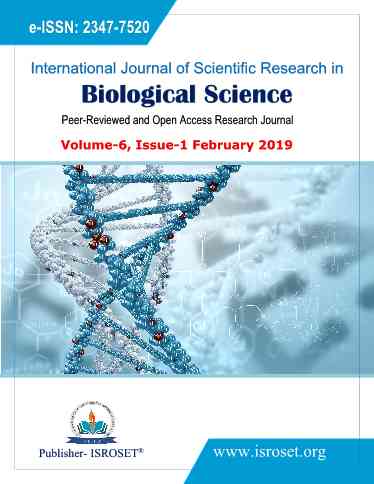Physico-Chemical Analysis of Waste Water from ACC Cement Industry from an Industrial Town – Ghugus (Maharashtra), India
Keywords:
Physico-chemical, cement industry, effluent water, waste water, Nakoda pondAbstract
There are different sources of industrial water pollution, but one of them is the discharge of harmful chemicals and compounds into the water bodies through gutters, due to which the water from the water bodies becomes unsuitable for the drinking and other domestic purposes. Though 72% of the earth surface is covered by the water, only 2.5 to 2.75 percent is fresh water of which 1.75 to 2 % is frozen in glaciers, ice and snow, 0.5 -0.75 % as groundwater and moisture. Thus less than 0.01 % is available to us as a surface water to us from lakes, ponds, rivers, reservoirs and streams only. So it is our prime duty to keep them clean for the survival of not only humans but for all the living beings on this earth planet. Therefor the systematic management of industrial run off is necessary for keeping the balance of an ecosystem. Therefor a pond situated at Nakoda, the water of which is used by the natives for many purposes including drinking is taken for the study of physic-chemical analysis.
References
Balasubramanian, M.R., Krishnamoorthy, S. and Murugesan. K. 1999. Engineering chemistry- A textbook. Allied Publishers Ltd. New Delhi p- 410.
Peavy, S., Howard, Donald, R., Rowe and George Tchobanoglous 1987. Environmental Engineering. McGraw- Hill Intenrational Editions, New Delhi. p -211.
Kudesia, V.P. 1996. Industrial Pollution. Pragati Prakashan, Meerut, U.P. p -42.
Kudesia, V.P. 1996. Indusrial Pollution. Pragati Prakashan, Meerut, U.P. p- 46.
Matkar, L.S. and Gangotri, M.S. 2003. Acute toxicity tests of sugar industrial effluents on the freshwater crab, Barytelphusa Guerini. Pollution Research. 22 (2) : 269-276.
Mishra, P.C. and Patel, R.K. 2004. Water pollution from major industries in Rourkela. The industrial city of Orissa, India. Proceedings of the 3rd national seminar on Inland Water Resources and Environment, organised by University of Kerala, p. 108-112.
Patel, K.P., Pandya, R.R., Maliwal, G.L., Patel, K.C. and Ramani V.P. 2003. Suitability of industrial effluents for irrigation around Bharuch and Ankleshwar industrial zone in Gujarat. Pollutin Research. 22 (2) : P 241-245.
Trivedy, R. K. and Goel, P.K. 1986. Chemical and Biological Methods of Water Pollution studies. Environmental Publications, Karad.
Vinod Kumar, Raina, A.K., Srivastava, R.K. and Singh, J.P. 2004. Waste Water: Problems and Prospects. Proceddings of the 3rd national seminar on Inland Water Resources and Environment, Organised by Unviersity of Kerala. p 121-127
Patel, K.P., Pandya, R.R., Maliwal, G.L., Patel, K.C. and Ramani V.P. 2003. Suitability of industrial effluents for irrigation around Bharuch and Ankleshwar industrial zone in Gujarat. Pollutin Research. 22 (2) : P 241-245.
Trivedy, R. K. and Goel, P.K. 1986. Chemical and Biological Methods of Water Pollution studies. Environmental Publications, Karad.
Matkar, L.S. and Gangotri, M.S. 2003. Acute toxicity tests of sugar industrial effluents on the freshwater crab, Barytelphusa Guerini. Pollution Research. 22 (2) : 269-276.
Downloads
Published
How to Cite
Issue
Section
License

This work is licensed under a Creative Commons Attribution 4.0 International License.
Authors contributing to this journal agree to publish their articles under the Creative Commons Attribution 4.0 International License, allowing third parties to share their work (copy, distribute, transmit) and to adapt it, under the condition that the authors are given credit and that in the event of reuse or distribution, the terms of this license are made clear.







